
10 minute read
Savor Fare
A Croatian culinary adventure
Written by Bridget Williams
Glancing down at my feet, which were firmly planted on a floor shod in an expanse of golden glitter under epoxy in the über modern spa at Hotel Monte Mulini, I pondered the fact that less than 30 minutes hence, these same soles trod ancient cobblestones slick and glistening from a popup rain shower. This dichotomy, which the Europeans muster and master so well, is one of many charms to be discovered in the seaport of Rovinj, Croatia.
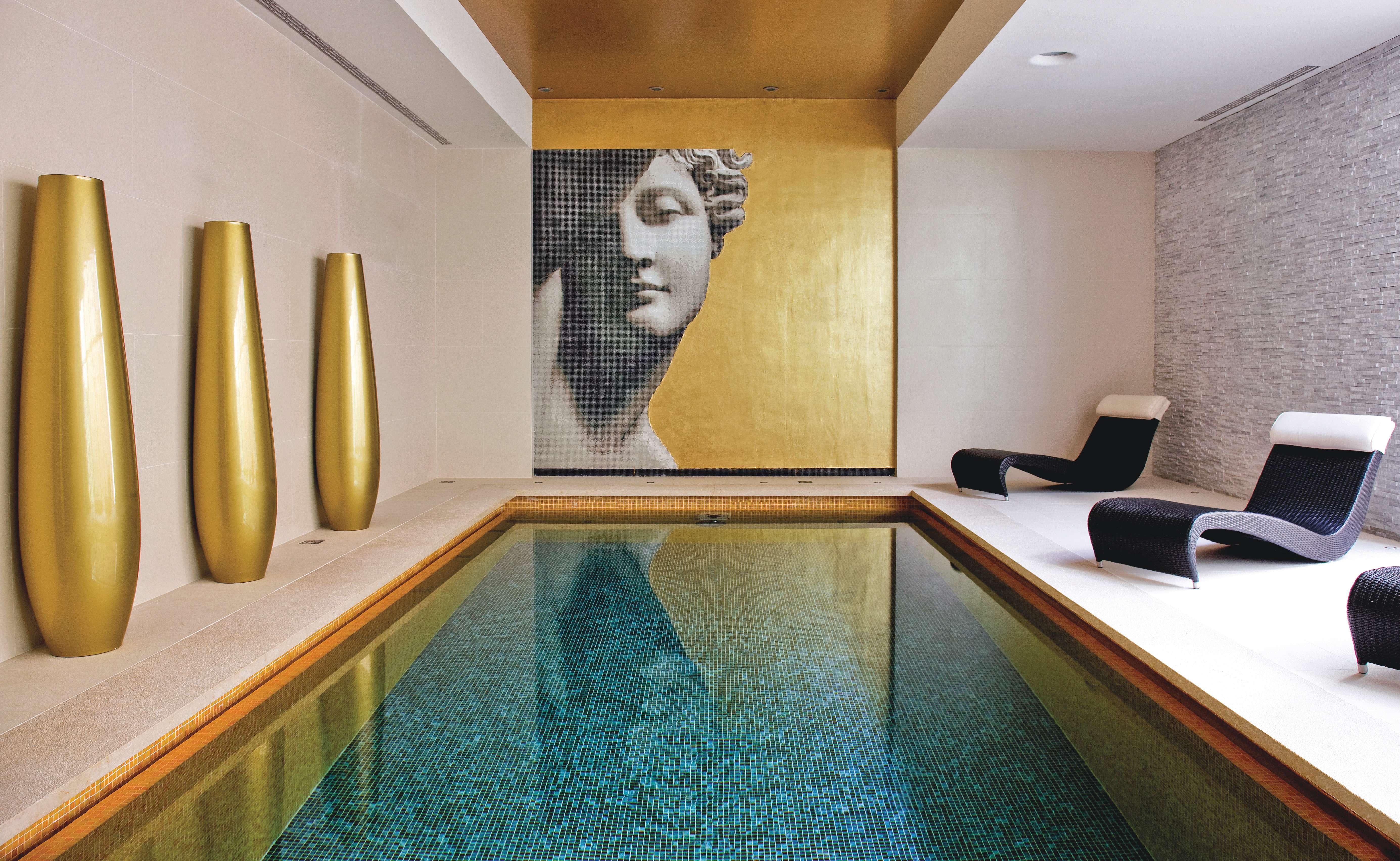
The spa at Hotel Monte Mulini.
Less than a three-hour car ride from the international airport in Venice, Rovinj, part of the Istrian Peninsula, is situated on a hilly promontory punctuated by the Church of St. Euphemia’s 180- foot bell tower at its apex. Originally an island before the channel separating it from the mainland was filled in 1763, there are a total of 22 islets that comprise the Rovinj Archipelago.
Controlled by the Romans, the Byzantine and Frankish Empires, the Republic of Venice, the Austrian Empire, and Italy, among others, over the course of recorded settlement, Croatia gained independence in 1991 but still exhibits palpable Italian cultural characteristics. As viewed across the harbor, particularly at sunset with a plethora of batanas (traditional flat bottom wooden fishing vessels) bobbing about in the water, the dense cluster of ancient buildings, some dating to medieval times, that populate the small peninsula and are interspersed with steep, twisting and narrow alleyways, as well as a waterfront promenade bustling with bars and restaurants, congeal to create quite a picturesque scene.
Headquartered in Rovinj, Maistra Hotels and Resorts, operator of 17 hotels and resorts throughout Croatia, took it upon themselves to raise the profile of Rovinj as a top-drawer destination by opening the first and only five-star properties in the city: Hotel Monte Mulini and Hotel Lone. "Te leadership at Maistra wants to make Rovinj the next Côte d'Azur," remarked Tihana Milas, marketing director for Maistra. Located next to one another on Lone Bay and at the edge of the verdant, expansive and centuries-old Zlatni rt forest park and just one mile from the center of the Old Town in Rovinj, each property offers a completely unique experience for the luxury-minded traveler. Hotel Monte Mulini debuted first in 1999 and still remains the top hotel in Istria, followed by Hotel Lone in 2011.

Restaurant Mediterraneo at Hotel Monte Mulini.
Offering a more boutique experience than its sister property, Hotel Monte Mulini’s roofline mimics a giant wave ready to crash into the blue-green waters of the Adriatic Sea. Ample use of glass in public spaces and the 113-guest rooms, all of which have sea-view balconies, make the most of the enviable environs.

Aerial view of Hotel Monte Mulini on Lone Bay.
Arriving at lunchtime following an overnight flight to Venice, I resisted the urge to take a brief catnap and instead ventured to the Restaurant Mediterraneo to dine alfresco on the covered terrace overlooking the expansive pool area and the bay. The simple, but delectable cuttlefsh salad would have been the star of my meal if it weren’t for my frst taste of immensely flavorful Croatian olive oil, which I heartily sopped up with slices of warm, crusty bread.
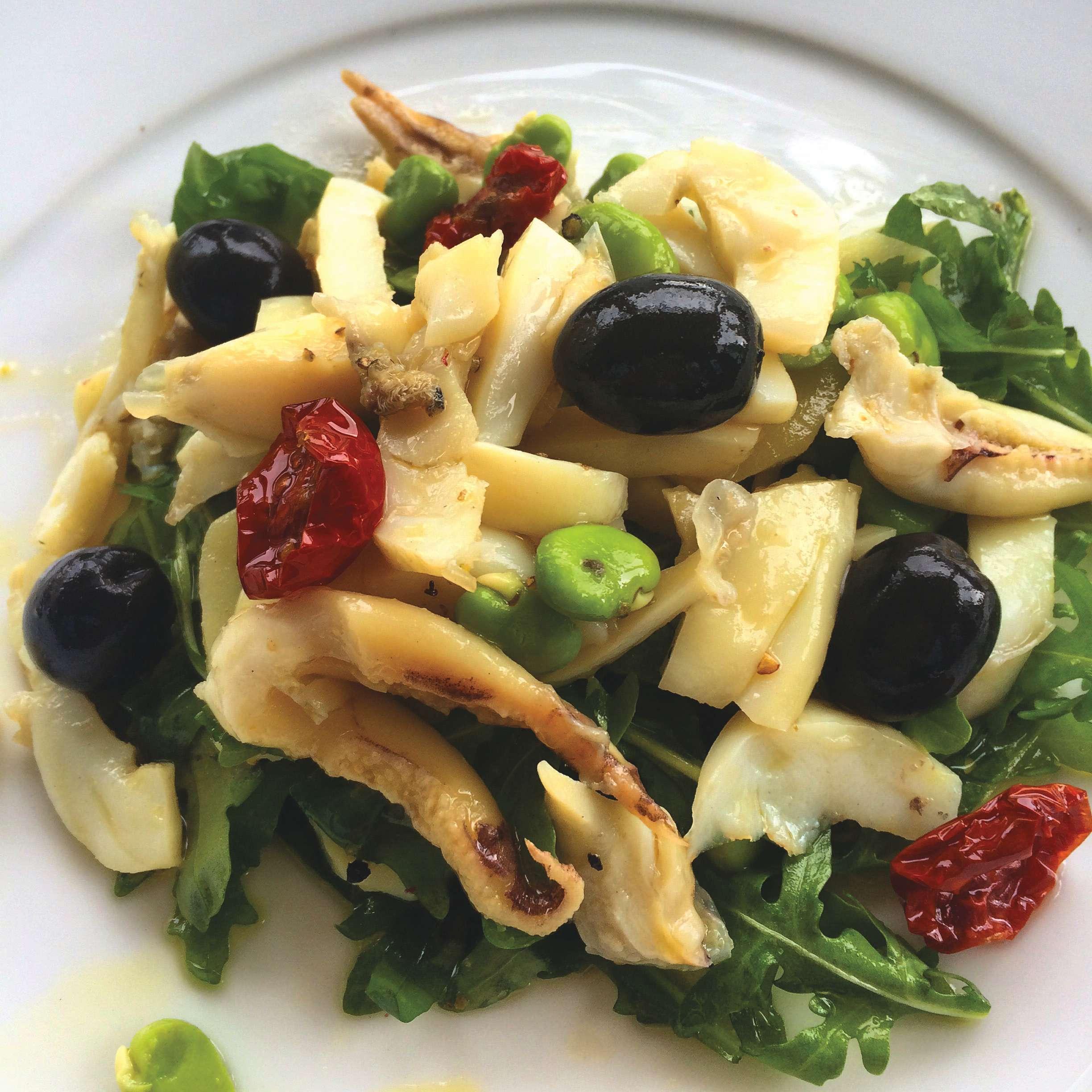
Cuttlefish salad at Restaurant Mediterraneo. Photo by Bridget Williams.
With the forest beckoning and reinvigorated by lunch, I set off to explore the parklands, stopping first to inhale the heady fragrance of lavender and rosemary planted en masse on the hotel grounds. Of-limits to motor vehicles, but well-used by the locals, ample pathways traverse the rocky shoreline and branch off into the depths of the fairytale-like forest, defined by 10 species of cypress, which lends a distinct Mediterranean mien. During summer there are a trio of seaside restaurants near designated swimming beaches. Complimentary bicycles are available from the hotel for exploring the park or the city.

Graftti in Zlatni rt forest park.
Monte Mulini’s intimate Wine Vault restaurant boasts a triumvirate of accolades: Croatia’s top-ranked restaurant, the country’s best chef in Tomislav “Tom” Gretić, who was the first chef in the country to implement the chef ’s table concept, and leading sommelier Emil Perdec. An experience best described as Disney World for gastronomes, the approximately $200 per person charge for the privilege of dining at the chef's table provides access to an unlimited number of fine dining courses specializing in French delicacies with local influence and complemented by the largest wine list in Croatia – over 600 superior Croatian and international wines. Glasses of Istrian Malvasia wine are served in specialty glasses created by Riedel. The affable Chef Tom noted that guests “eat as long as they feel like eating,” and while the average table savors 15-18 courses, a mind-blowing 30 courses currently holds the record.

Chef Tomislav "Tom" Gretić at the Wine Vault Restaurant. Photo by Bridget Williams.
A three-story wellness center is connected to and partially shared with guests of Hotel Lone. Approximately 2,000 of the 25,833 square feet is reserved exclusively for guests of Hotel Monte Mulini. To categorize the space simply as a spa would be a gross understatement: it’s more of a temple to health, wellness, and self-indulgent pampering. The hyper-modern, dreamlike atmosphere that alternates between tall-ceilinged relaxation zones flooded with natural light to cocoon-like rooms with floating pools is enough to transport you to an alternate state of mind. Treatments for face and body incorporate ecological oils from Croatia, and fully customizable treatment rooms allow you to select the lighting, color, music, and temperature.
Larger in scale and strikingly modern, the predominantly black and white interior of Hotel Lone is reminiscent of the spiraling walkways found in New York City's Guggenheim Museum. Te frst Design Hotel in Croatia, the property was made a member of the lifestyle brand a full two years before it was even built; as one would expect, the aesthetics are a visual treat for aficionados of contemporary design. The 236-guest rooms and 12 suites boast sea or forest views and dramatic black walls with dark aubergine drapery.

Exterior of Hotel Lone.
Each public space features unique attributes, from the leather drapery in the jazz nightclub to meeting rooms with mirrored ceiling tiles. Even the smallest detail is executed with an eye for design, such as the frame-worthy artwork on the oversized menus in Restaurant L, known for its “Design Food Menu,” which links food and design and is one of three restaurants on property. A design shop on the ground floor specializes in covetable cutting-edge fashion and home accessories by local designers, along with a selection of locally produced wine and olive oils.
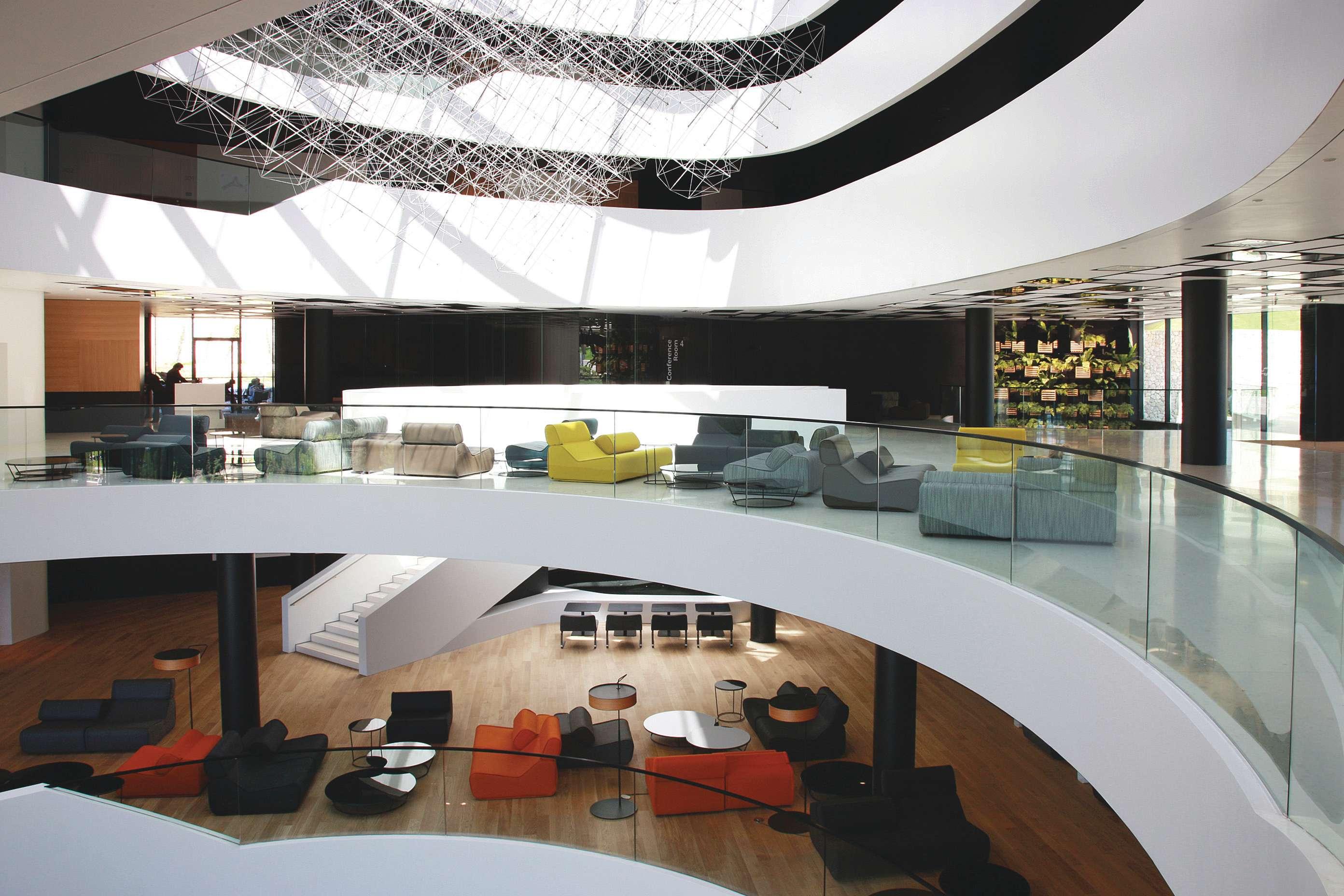
Public spaces in Hotel Lone.
During the summer months, guests can luxuriate at the new expansive outdoor pool area or Mulini Beach, a beach club launched in 2014 and reserved for guests of Hotel Lone and Hotel Monte Mulini. “Ofering a beach experience in Rovinj is something we’ve wanted to do for a long time and are excited about the opportunity for travelers to enjoy the destination in a new way,” said Tomislav Popović, Maistra’s CEO.

Pool terrace at Hotel Monte Mulini.
As tempting as it may be to stay put and solely enjoy either hotel’s extensive amenities, there are scores of activities within walking distance or a short car ride away. During our visit, we tended to let our stomachs set the agenda, seeking out the best local food and wine.

Rovinj at sunset. Photo by Bridget Williams.
In Rovinj, the locals joke that the Rio Bar, the oldest in the city, is the place to go if you want to learn to swear in Croatian or Italian. Te top restaurant in town – Kantinon Tavern - is located in a 200-year-old building. Serving Mediterranean-inspired cuisine, the menu pays homage to the bounty of local fishermen and is 100 percent locally sourced. We feasted on marinated sardines, cured meat, fresh tuna and Kumparička goat cheese, made by a local attorney-turned-cheesemonger, and washed it all down with Misal sparkling wine (made less than 15 miles away) and San Servolo beer, brewed in nearby Buje.

Lunch at Kantinon.
Prosciutto (or prsut) is a long-standing tradition in the coastal areas of the country. While preparation methods differ slightly from their Italian neighbors across the Adriatic, the end result is every bit as delicious after being aged for eight months in the salty sea air. Many restaurants serve prsut as an appetizer, or you can buy some freshly sliced at the daily market in the old town as the basis for a traditional breakfast (two slices of prsut, bread and a glass of wine) to savor on the waterfront promenade or on the hilltop terrace at the base of the stairs to St. Euphemia. Older city inhabitants in particular still mix wine with their water as a carryover from a time when wine, particularly in summer, was the preferred alternative to bacteria-laden cistern water. After breakfast, embark on a harrowing climb up the steep and narrow wooden staircase of the church’s bell tower for a breathtaking panorama of the peninsula.
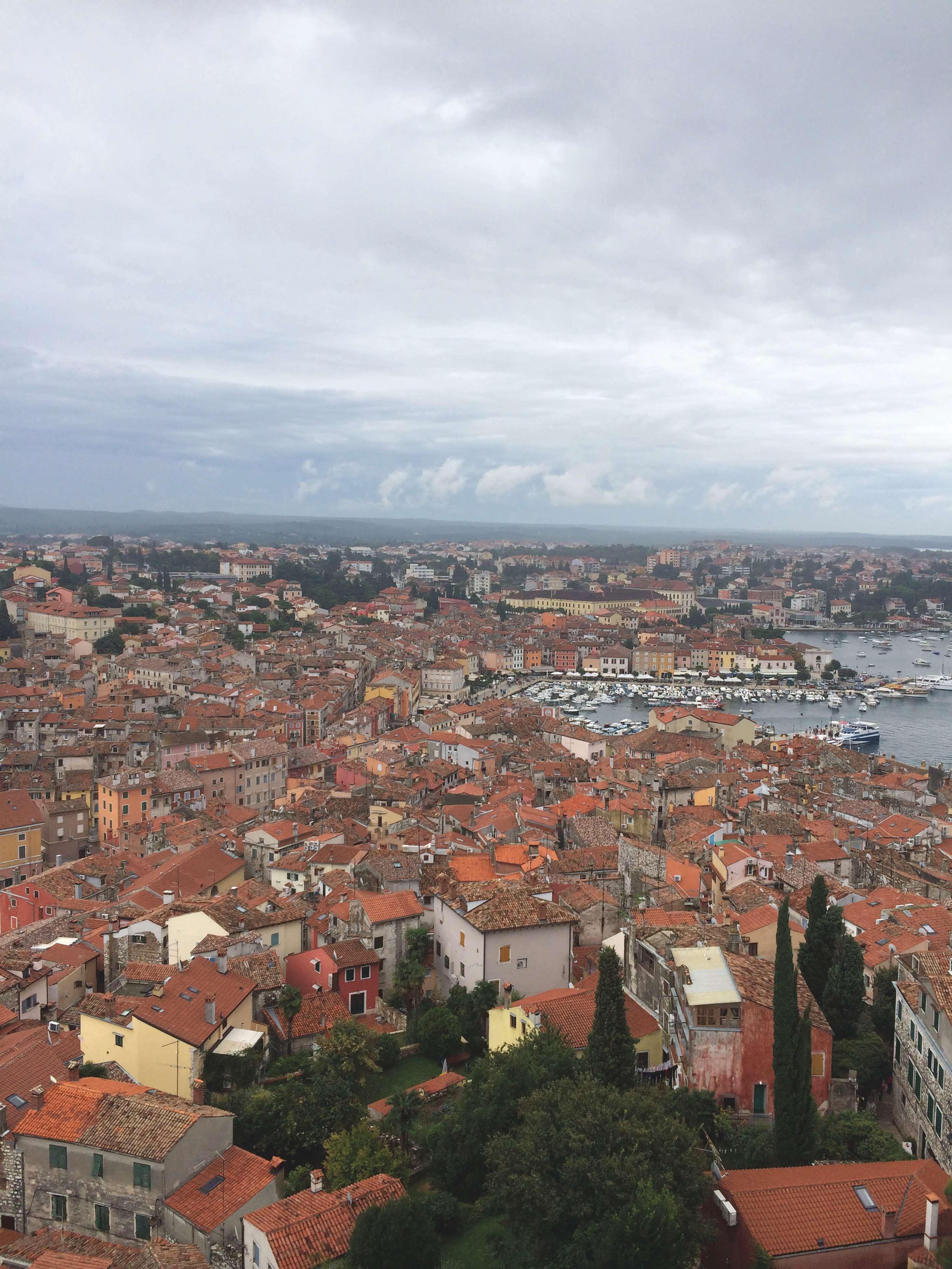
View of Rovinj from the Tower of St. Euphemia.
Approximately seven percent of the world's best olive oil hails from coastal Istria, because, as one purveyor remarked, "olive trees love to see the sea." Among the best is Chiavalon (chiavalon.hr), a small family-run operation founded in 1997 when, following the death of his father, Sandy Chiavalon, then a 14-year-old with a passion for olive trees, planted 100 specimens alongside 50 or so existing trees estimated to be hundreds of years old.

Olive oil at Chiavalon.
Two decades later, the family farm encompasses 7000 trees and employs organic farming methods to produce oil highly coveted by connoisseurs and ranked among the world's top 15. A tasting with Sandy’s brother Teddy in Chiavalon’s rustic-chic tasting room is a truly special experience, learning to roll the liquid gold around the tongue and allowing it to linger in the back of the throat to feel the spicy bitterness that defines an Ex Albis-grade olive oil. Be forewarned: you'll leave never wanting to settle for run-of-the-mill olive oil again! "I want our visitors to leave as olive oil sommeliers," said Teddy.

Teddy Chiavalon.
Other areas of note include the small town of Kringa (population 315) whose claim to fame is Jure Grando, purported to be the first real person described as a vampire in historical records, and the medieval town of Vrsar, one of Giacomo Casanova’s preferred haunts and home to a summer sculpting school. A little further of the beaten path is Meneghetti winery, restaurant, and Relais & Chateaux wine hotel (meneghetti.info). The setting is breathtakingly gorgeous with outstanding cuisine and top-tier wines and olive oils to boot.

Meneghetti Vineyard.
Truffles are paramount in Istrian cuisine, and truffle season, which runs from the end of October through early December, brings out scores of professional and amateur hunters, who are lured by the $1,300-per-pound bounty. The undisputed king of the hunt is Giancarlo Zigante, who found a two-pound truffle that entered the Guinness book of records as the biggest example ever found.

Freshly dug black truffe in Livade.
Zigante’s eponymous restaurant (restaurantzigante.com), set at the edge of Motovun forest in the Livade area, one of the most important sites for harvesting the white truffle, was the first Croatian restaurant to specialize in an Istrian truffle-based menu. As someone absolutely enamored with the pungent fungus, savoring delicate slices of truffle in every course (including dessert) made for a truly memorable meal. The on-site gourmet shop offers some 50 truffle-related products, and I stocked up on everything from truffles packed in oil to truffle-infused sausage.
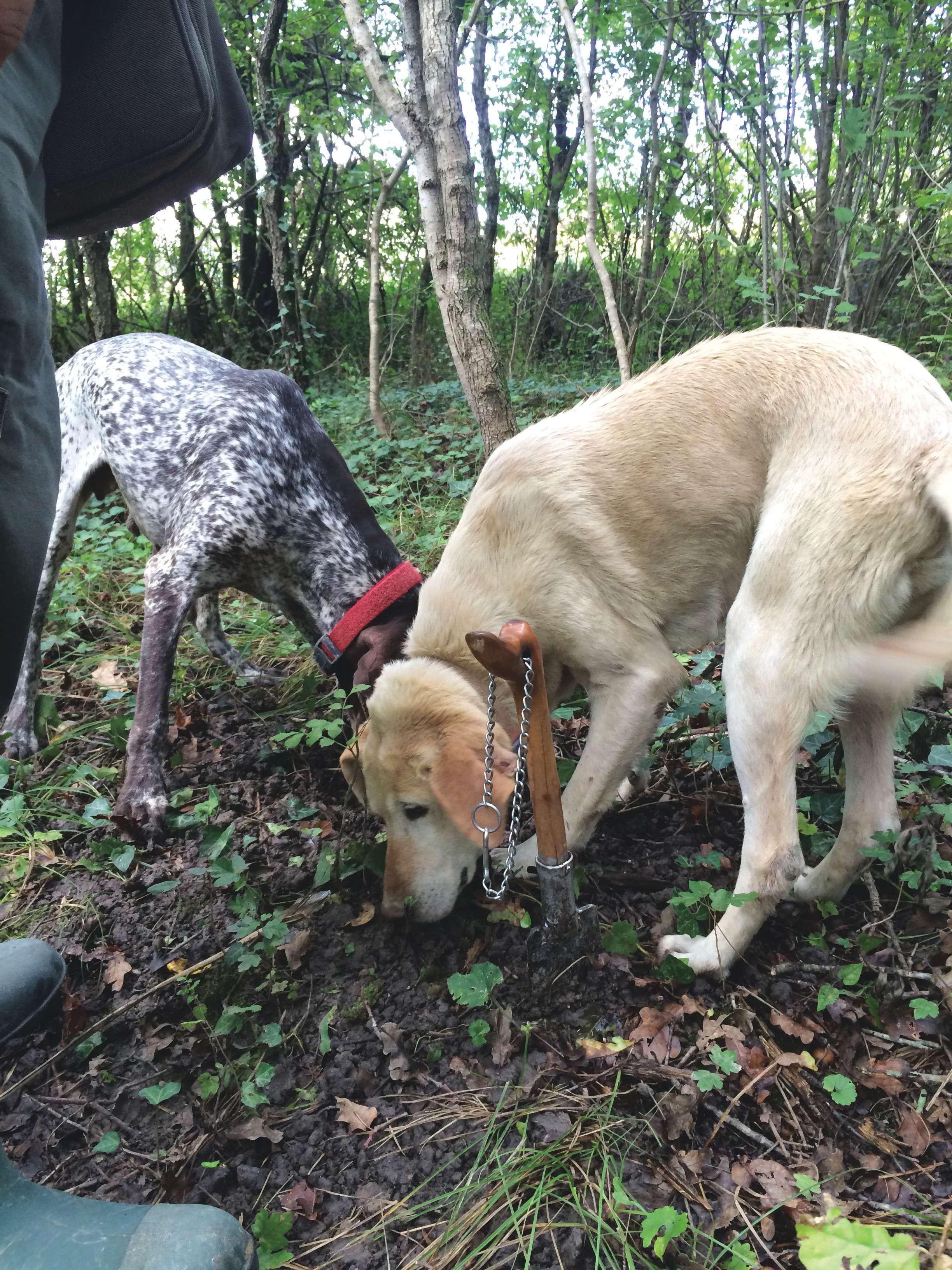
Truffle-hunting dogs at work.
The worst part of my trip? Defying the laws of spatial planning in order to fit several bottles of wine, olive oil, and truffle-infused products into my suitcase, only to have US Customs in Philadelphia seize my coveted truffle sausage, despite my desperate pleas and an offer of an impromptu picnic so it wouldn’t go to waste. In spite of this unfortunate incident, I managed to extend my trip in sprit when I kicked off summer grilling season a few weeks ago with a juicy steak simply and perfectly seasoned with salt and Croatian olive oil.
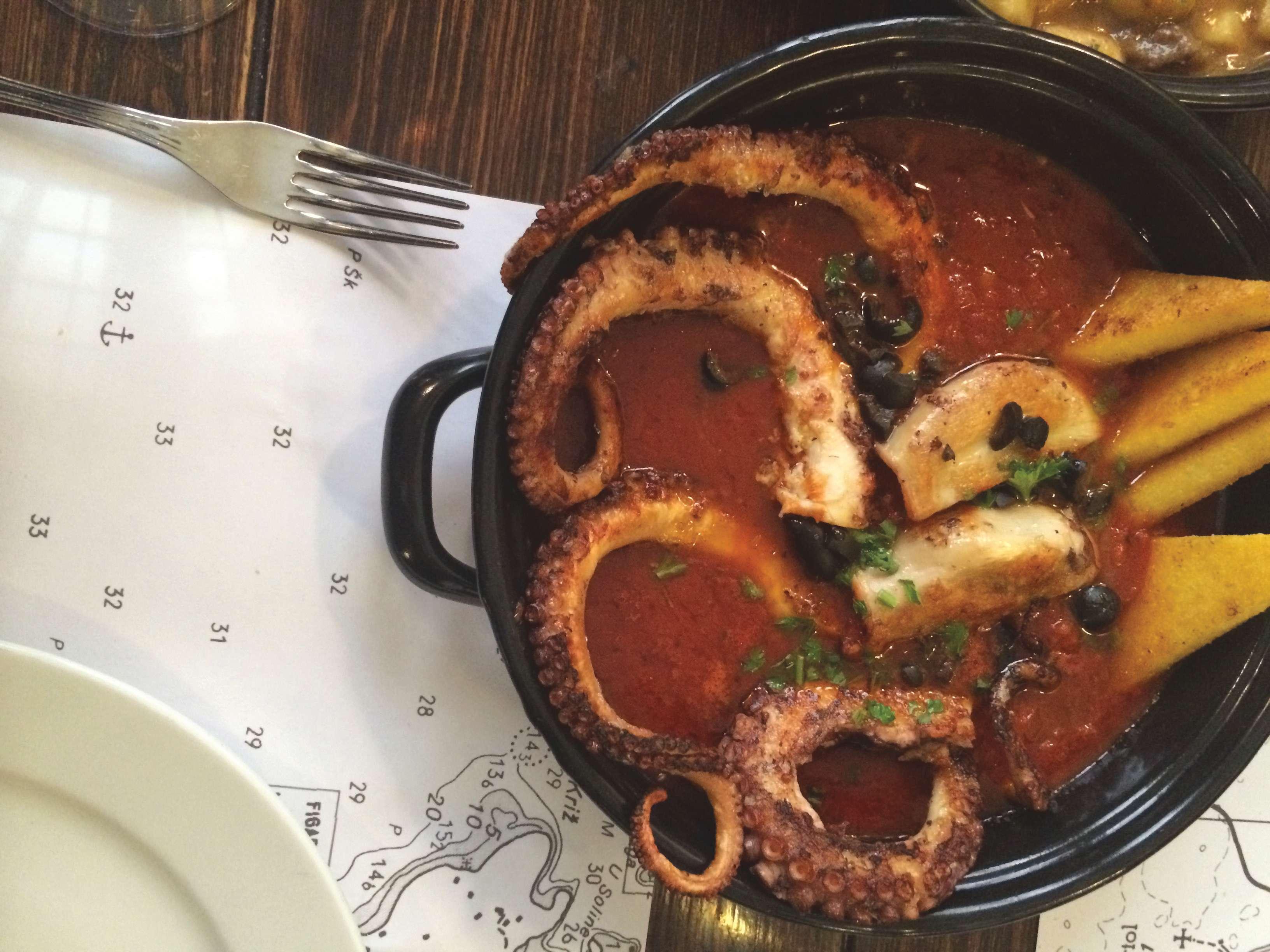
Local seafood at dinner in Rovinj.
Hotel Monte Mulini is open April through October. For more information visit montemulinihotel.com. Hotel Lone is open year-round. For more information visit lonehotel.com.

